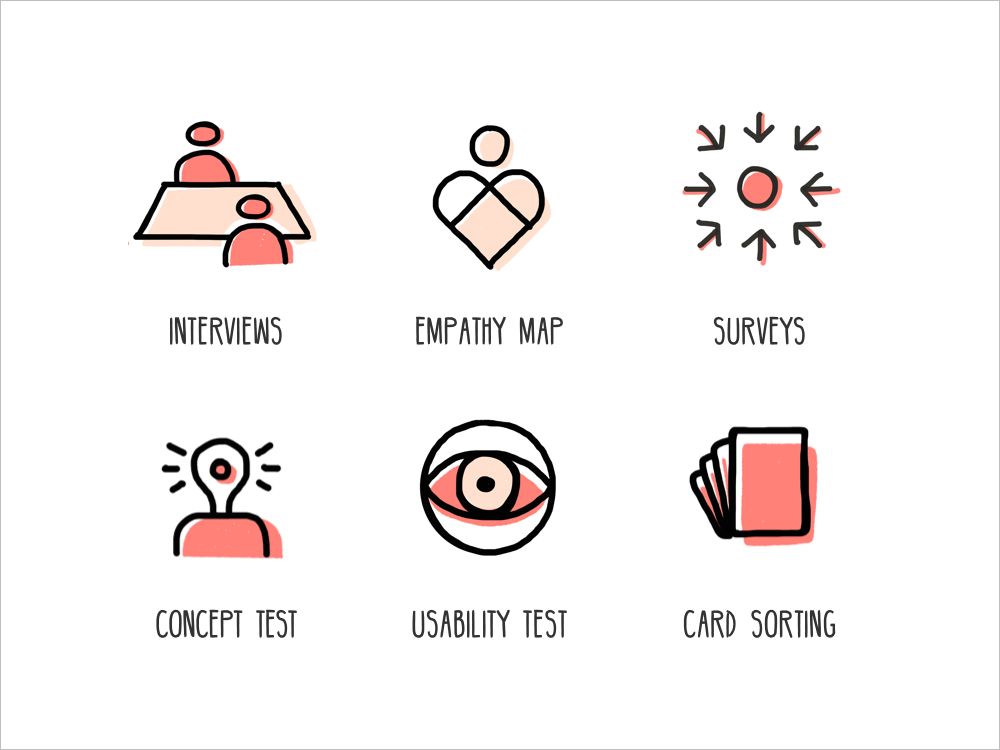
I have a research toolkit that helps me quickly embed myself into any multidisciplinary team to uncover user needs.

Discovery Interviews are important when trying to get to know your customer’s needs. No amount of quantitative data can replace a few valuable interview sessions with the target audience. I gather context about my users by setting up remote or in person sessions. Often, I find 6-8 interviews sufficient to tell a story about a customer’s needs and pain points. In a few days, I bring insights illustrated with curated video clips back to the team I work with.
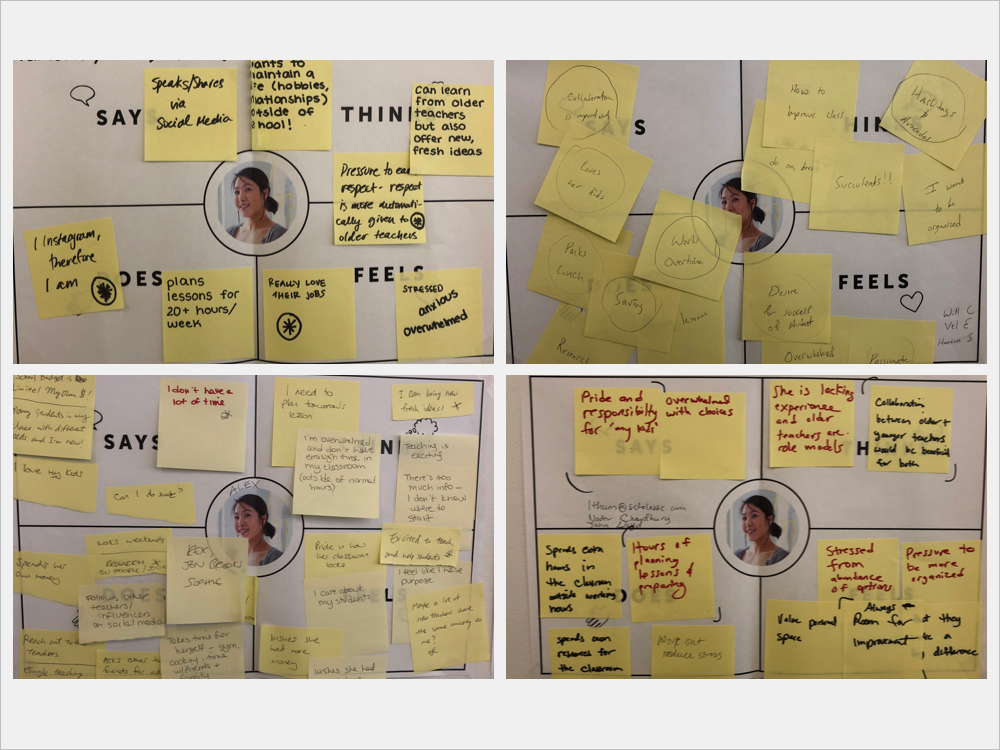
Empathy Maps can help organize customer research findings and are a great tool to kickoff a team discovery project or brainstorm. I like to use empathy mapping because we can focus on how users think and feel rather than just focusing on existing behavior.
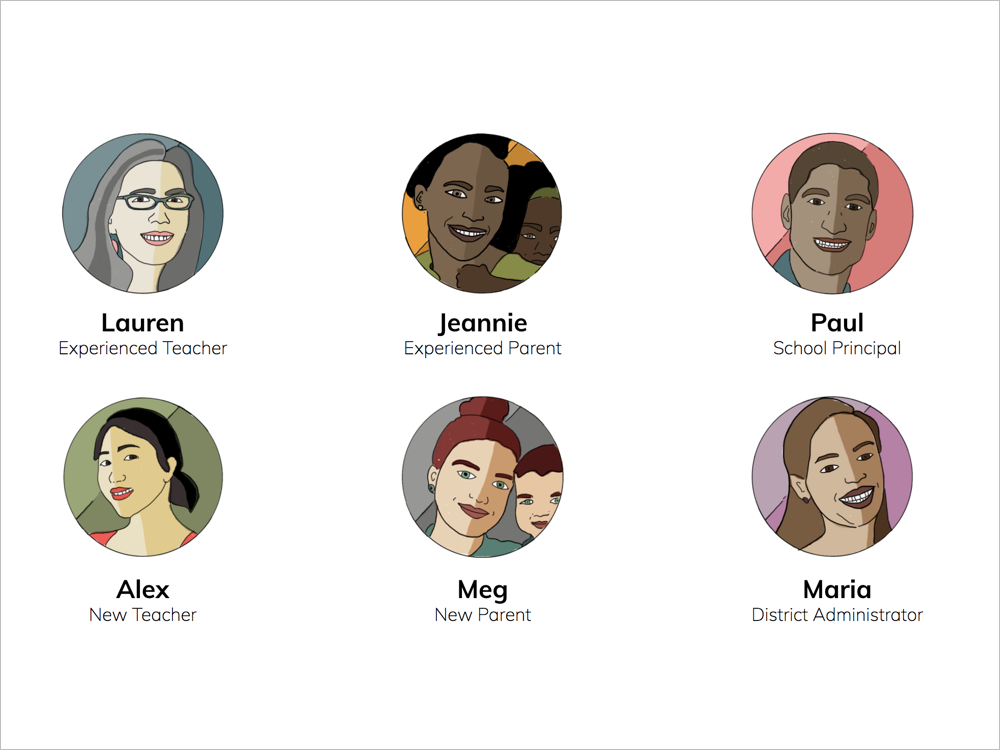
I use Personas to summarize findings from customer interviews and field research. Personas help remind the team who we are building for and how we should prioritize new opportunities. I also take a lot of pleasure in drawing my own personas. :)
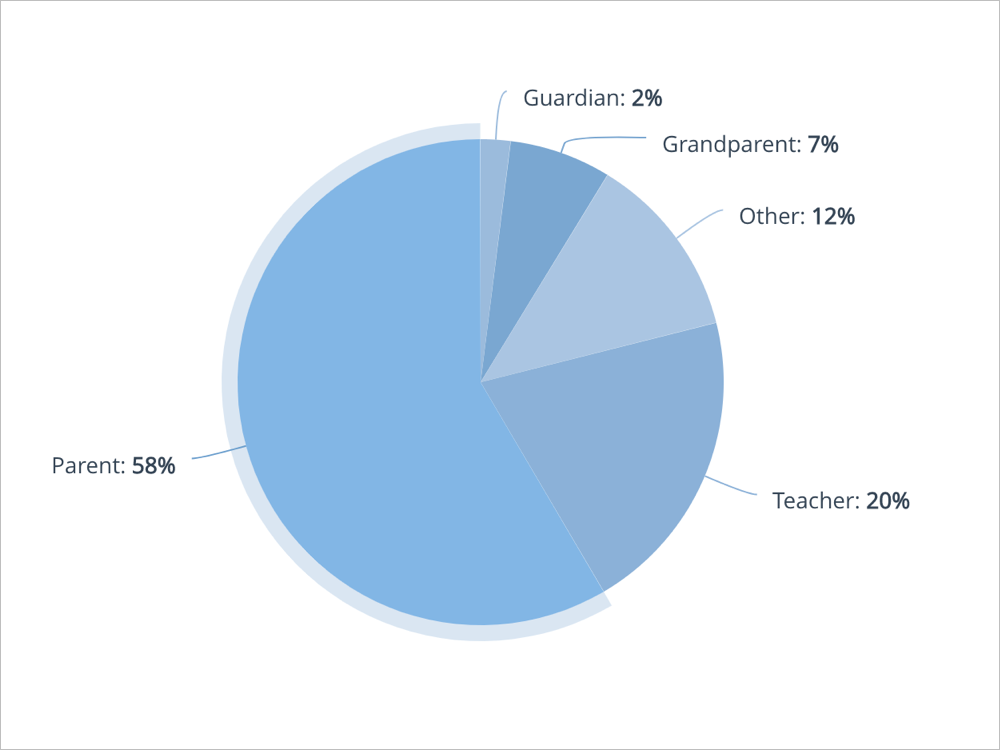
Surveys help collect data about our audience and their motivation for coming to a website or engaging with a platform. I usually launch a survey as an additional way to gather feedback after an interview or concept test.
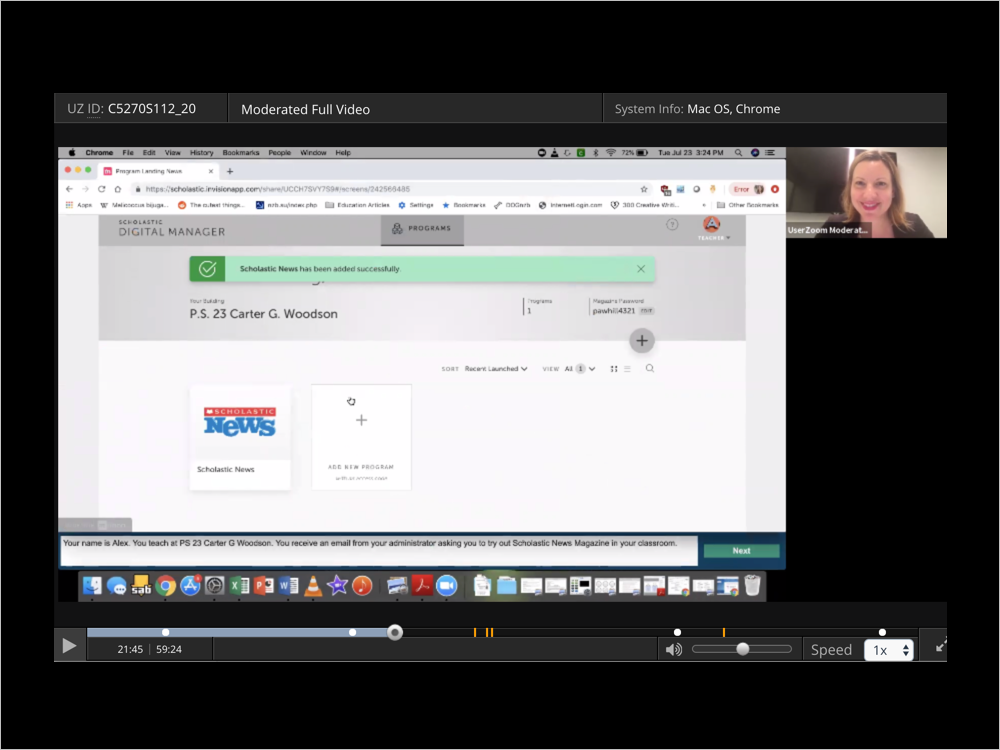
Concept Tests help prove an idea before engineering invests several sprints building it. A concept test can be done with a quick prototype or within a beta environment. When a newly designed product or website is in its early stages, I can design a concept test geared at validating the success of the new experience or getting feedback on how to improve/change it. Doing a concept test as part of a product design cycle can help save time, improve the overall final product and give the team confidence to move forward. I do concept tests in UserZoom or UserTesting.Com.
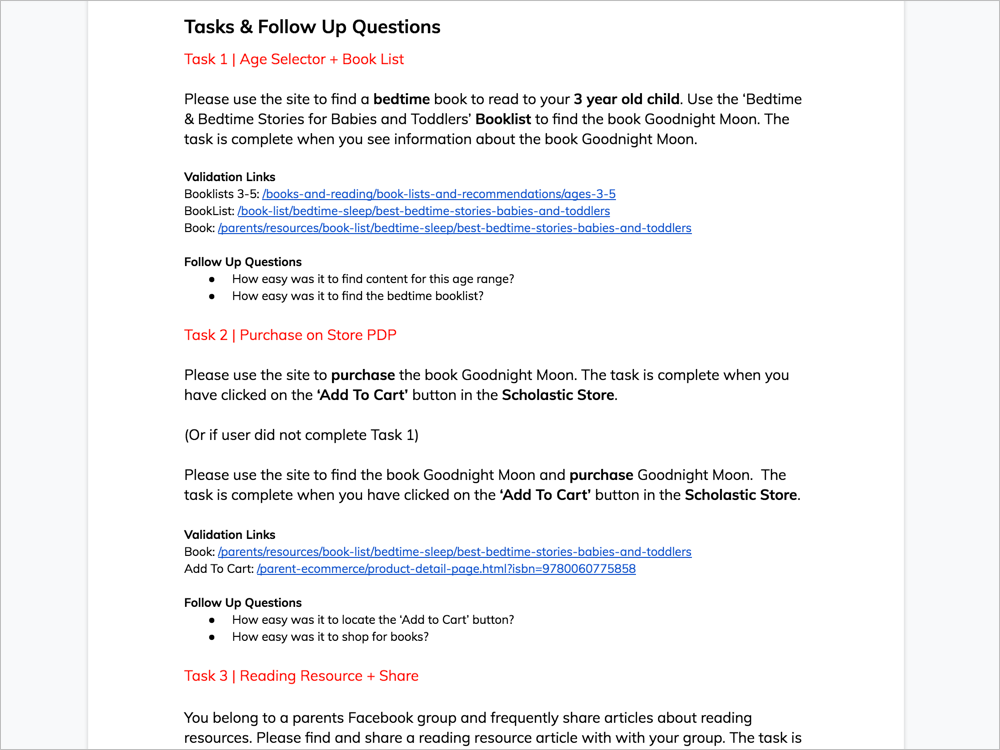
Usability and Benchmark Tests help the team uncover and improve user experience challenges a customer may face when trying to accomplish a core task. A usability test can be done with a prototype or with a live website. I can script a quick usability with a handful of customers or a quantitative benchmark test to measure task completion, task time and ease of task with hundreds of customers.
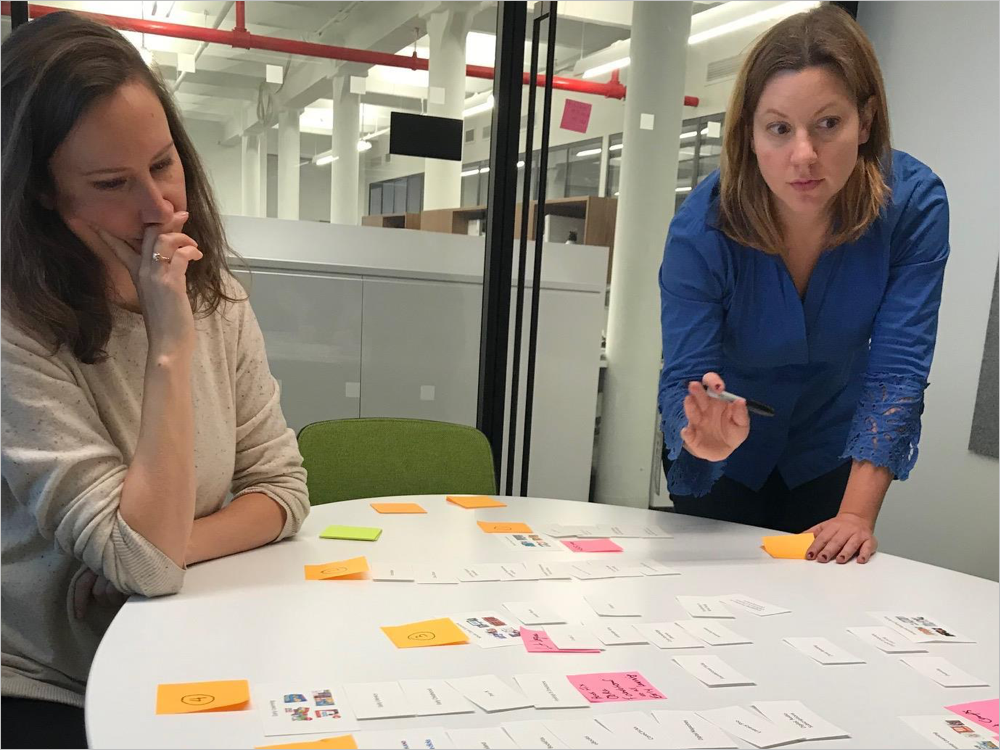
I propose doing Card Sorting exercises when the team needs to rethink categorization around product or content. This exercise is often paired with a top level navigation redesign. Card Sorting is a great way to bring team members together and categorize items based on what is intuitive to the user rather than a business or technical constraint. I can do in-person or remote card sorts. I enjoy doing the full analysis and organizing a session to workshop the results.
Research Toolkit
Over many years and projects, I have learned that it is critical to involve users in the design process. I have experimented with various lightweight user touch points to bring customer perspectives and feedback into the products, services and websites I design.
In more recent years, I have taken on design research in a more official capacity. I have refined a research toolkit that helps me quickly embed myself into any multidisciplinary team and product design process to uncover user needs.